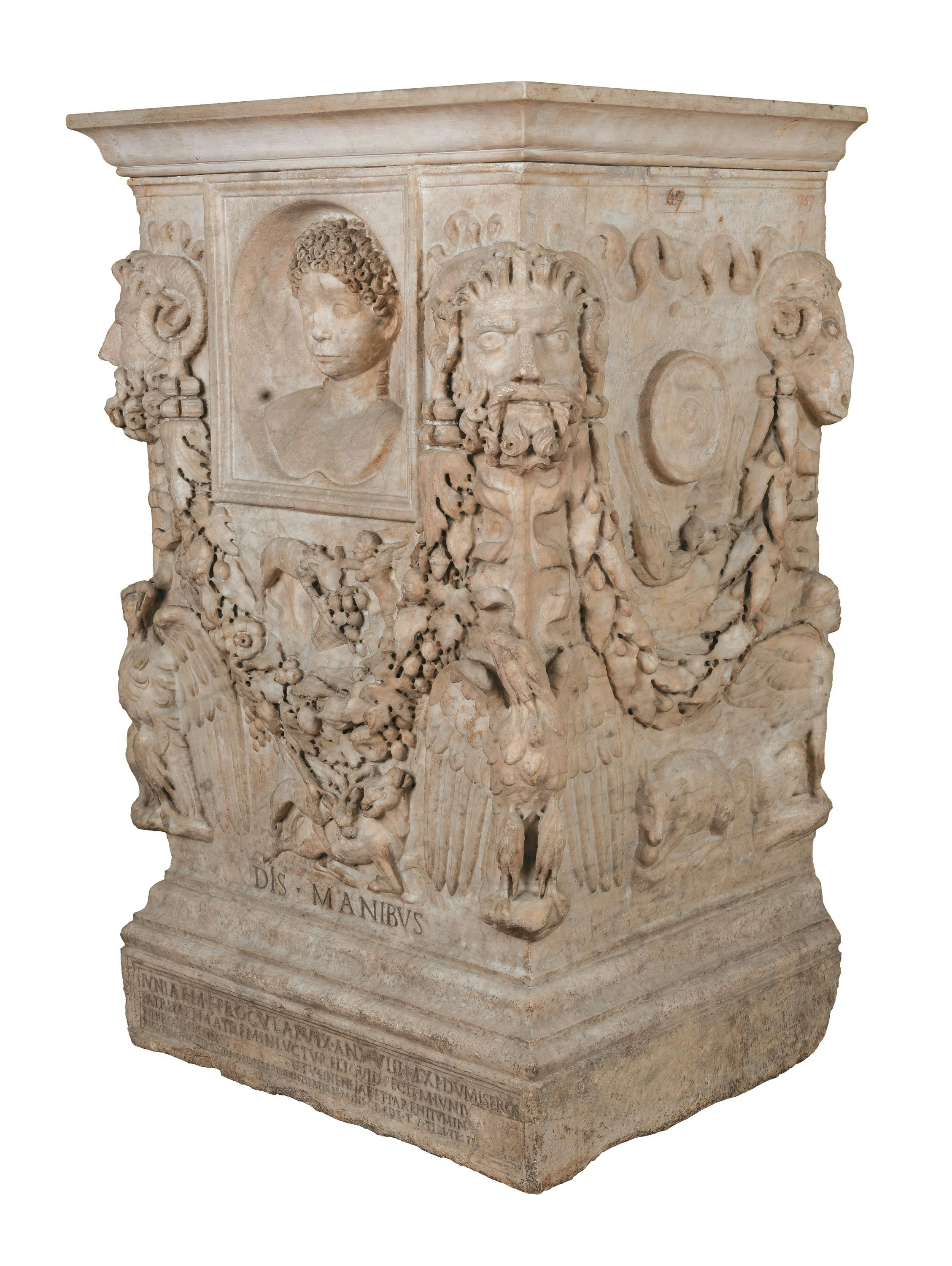Altar in honor of Junia Procula. Front.
Roman art
The two short sides and the main facade of the monument are richly decorated. In the center, the face of a very young deceased girl, Junia Procula, looks down at the spectator. She is depicted in the panel normally used for the inscription, which is in fact almost completely relegated to the plinth of the central panel (CIL VI 20905). The latter is divided in half by a festoon of flowers and fruit, hooked on each side to the curved horns of Jupiter Ammon, set over an eagle with wings outstretched on both sides, sitting on projecting bases. Below the festoon there is a hunting scene, where a griffin is swooping in on a bull, while a genre scene is depicted above, in which a dog has made an Erote to drop the basket of fruit he is holding.
The inscription recounts the short life of Junia Procula, who passed away shortly before turning nine years old, leaving her parents in despair: her father, M. Junius Euphrosinus, probably a freedman, given his Greek-derived cognomen, and her mother, whose name is illegible, erased from the text by damnatio memoriae, the practice that decreed the elimination of the memory of public figures found guilty of crimes against the State. In this case, the back of the altar provides an explanation for the practice, anomalous in the private sphere, by citing a curse Euphrosinus put on his cheating wife, Junia Atte, who had been his slave before marrying him. However, before breaking up, the couple had decided to celebrate the young member of the Procula family extravagantly, as is clear from both the decoration of the monument and the bust-portrait of the girl. Her image, with a multitude of curls framing her face, recalls the representations of leading members of the ruling dynasty - in this case the domus flavia – which had by then become the matronly reference model for the representation of women, a standard also followed in this case, featuring a young girl who had been the daughter of two successful freedmen.
The level of refinement of the altar dates it to Roman production and, like many of the other altars in the exhibition, evidence exists of its presence from the mid-16th century onwards in the vineyard of Cardinal dei Medici outside Porta Flaminia, a property owned by Cardinal Giovanni in 1560 and passed on to his brother, Cardinal Ferdinando, when Giovanni died in 1562.
